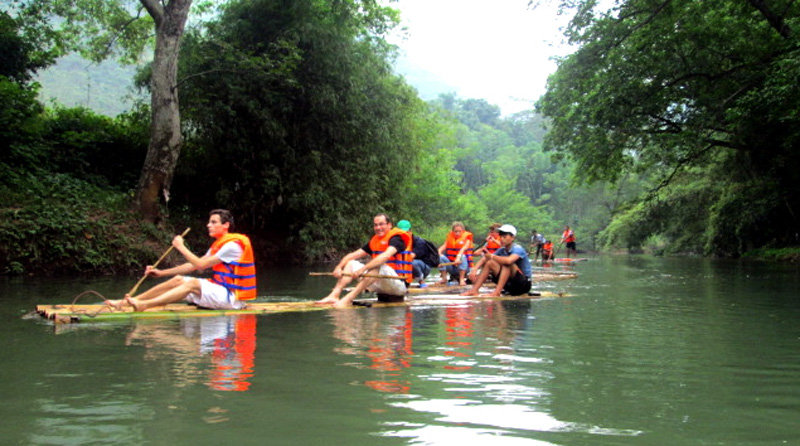



Guests are experiencing rafting at Xia
stream, Mai Hich commune (Mai Chau).
Speaking to us, Mr. Ha Cong Minh, the owner
of Minh Tho homestay said: "We started to run community – based tourism
from 2012 according to the standards of CBT Travel Company. In which, CBT
Travel specially paid attention to promoting the typical traditional cultural
values of Thai ethnic people, the ethnic dishes, etc. In addition, the company
particularly pays special attention to ensuring environmental hygiene and food
safety, installing the utility systems to serve the needs of visitors such as
electric system, lighting system, wifi router, etc. In order to attract
visitors, we have coordinated with the service groups in the commune to set up
the services of biking, rafting, trekking for visitors to really experience,
explore when relaxing here."
Thanks to the change of mindset in the way of
community tourism business, in 2017, Mr. Minh's family received more than 7,000
visitors to stay and relax on weekends and holidays of the year. Most of them
are international tourists from France, England, Spain, and Netherlands, etc.
The average amount that each visitor spending on relaxing at Minh Tho Hometay
is about 560,000 VND for services. The profit after deducting expenses of Mr.
Minh Tho's family from the development of community tourism is 250 million VND
per year.
Ngoài ra, du khách còn được thỏa sức
khám phá các cung đường đi bộ mạo
hiểm.
Homestay Minh Tho is one of 7 effective
development centers of community tourism model. According to the survey in
2017, Mai Hich commune welcomed nearly 10,000 visitors, of which international
tourists accounted for 60%. In the first months of this year, the homestay
received more than 4,000 visitors to stay. Most visitors coming to Mai Hich can
feel the friendliness, hospitality, peace of the village and they can
experience, explore the traditional Thai ethnic culture with brocade weaving,
knitting, etc., enjoying ethnic dishes such as fish mixed with green
vegetables, green duck, Sang vegetables, etc. In addition, tourists can also
have fun exploring the dangerous hiking trails.